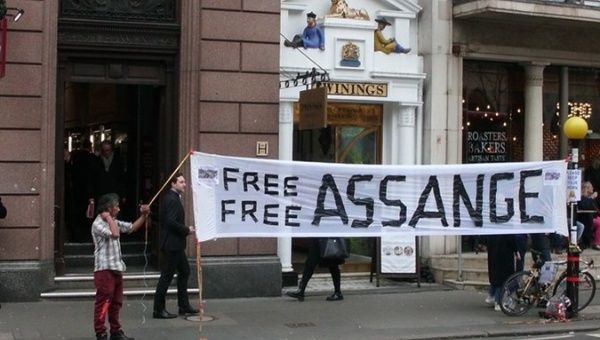
By Brownstone Institute
Though untruthful testimony pales in comparison to the crimes of the last five years, perjury may be the most effective charge to impose accountability on the wrongdoers behind the Covid Regime.
In the wake of World War II, American law enforcement discovered that top government officials had committed espionage on behalf of the Soviet Union. The Department of Justice was often unable to charge them as classified documents and bureaucratic secrecy risked prosecutorial dead ends.
But a 35-year-old Congressman from California devised a plan to catch the actors in the coverups of their crimes. Rep. Richard Nixon grilled State Department Official Alger Hiss on his associations with professed Soviet spies, including Whittaker Chambers. Hiss lied under oath by claiming he never met Chambers, and a jury subsequently convicted him of two counts of perjury in 1950.
Perjury, though a petty charge compared to treason, allowed prosecutors to present a clear case for a crime that requires three basic elements: (1) the declarant took an oath to testify truthfully; (2) the declarant knowingly made a false statement; and (3) the declarant’s false statement related to a material fact.
Now, Americans again face the distressing realization that leading academic, scientific, and governmental officials were guilty of deception, profiteering, and entangling foreign relationships in a global crisis. Classified documents and bureaucratic secrecy offer far greater protection than they did 75 years ago, but the case for perjury against Peter Daszak is now clear.
- Daszak testified under oath
Last week, the House Select Subcommittee on the Coronavirus Pandemic released a report recommending EcoHealth Alliance President Dr. Peter Daszak be “formally debarred and criminally investigated as a result of his actions prior to and during the COVID-19 pandemic.”
Daszak funneled hundreds of thousands of dollars in US taxpayer money to the Wuhan Institute of Virology to fund gain-of-function research and then spearheaded censorship efforts by secretly organizing a statement issued by the Lancet in February 2020 calling lab-leak hypotheses “conspiracy theories” that “create fear, rumours, and prejudice that jeopardise our global collaboration in the right against this virus.”
In November, Daszak testified behind closed doors for nine and a half hours. A House Report subsequently noted that his organization “continued to obstruct” ongoing investigations. On May 1, 2024, he appeared before Congress.
“Daszak’s testimony was a parade of perjury,” Dr. Richard Ebright, a molecular biologist at Rutgers University, told the New York Post. “A litany of lies. One knowing, willful, brazen and provable lie after another.”
Though Daszak tried to evade the Congressional Committee with obfuscation and non–answers, he made at least three categories of statements that subject him to perjury charges.
- Daszak knowingly made false statements
On Gain-of-Function Research
Daszak insists that his groups have not engaged in gain-of-function research, but the evidence suggests he has repeatedly lied under oath.
Rep. Nicole Malliotakis (R-NY) asked, “You did not fund any research that modified a virus to make it more infectious among humans?” Daszak responded immediately, “EcoHealth Alliance never has, and did not do gain of function research, by definition.”
That “definition,” well known to Daszak, is research that “improves the ability of a pathogen to cause disease,” as one 2014 US Government report explained.
Daszak’s denial is entirely inconsistent with his own words and his group’s well-documented history of government grants.
In July 2016, an NIH official informed Daszak that his requests for funding for research that would be “conducted at the Wuhan Institute of Virology” had been approved. “This is terrific!” Daszak responded to the NIH. “We are very happy to hear that our Gain of Function research funding pause has been lifted.”
Daszak’s excitement reflected EcoHealth’s history of gain-of-function research.
In 2014, NIH awarded EcoHealth a $3.7 million grant to study bat coronaviruses, which it conducted in collaboration with the Wuhan Institute of Virology. The researchers reported that their lab-altered coronaviruses reproduced far more quickly than the original virus in the lungs of genetically engineered mice.
In 2018, EcoHealth submitted a $14 million grant proposal to the Defense Advanced Research Projects Agency (DARPA) that suggested a partnership with the Wuhan Institute of Virology in which they would construct bat coronaviruses and insert “human-specific cleavage sites” as a means to “evaluate growth potential” of the pathogens. Though the request was denied, it was consistent with EcoHealth’s line of work.
In 2021, NIH admitted in a letter to Congress that EcoHealth enhanced a bat coronavirus to become more infectious to humans, and EcoHealth violated the terms of its grant by failing to report that the research increased the viral growth of the pathogen tenfold.
Daszak can plead ignorance on the meaning of gain-of-function research (he claims he does not “have a personal definition”), but there is a well-documented history demonstrating his obstinate pursuit of gain-of-function research at EcoHealth.
On Reporting Failures
Daszak and EcoHealth have admitted to failing to file timely reports on their research, which were required under the terms of their NIH grants. For example, EcoHealth did not submit its September 2019 annual report until 2021.
While this may seem like a mundane matter of bureaucratic non-compliance, the evidence suggests it was an act of deliberate deception. That progress report revealed a “limited experiment” in which EcoHealth found that laboratory mice infected with a lab-altered coronavirus became “sicker than those infected with” a naturally occurring virus. In other words, it revealed deliberate gain-of-function research.
While EcoHealth concealed the report for nearly two years, Daszak led efforts to censor and dismiss any concerns that Covid emerged from a lab.
In Congressional testimony, Daszak claimed that he did not submit the report because he was “locked out” of the NIH system and blocked from submitting it. But a forensic investigation “never found any evidence that they had been locked out of [the NIH] system.”
Circumstantial evidence further suggests that Daszak perjured himself on this point. In previous reports, Daszak directly emailed progress reports to his NIAID program officer after filing it with the NIH system. In 2018, for example, he wrote, “I just wanted to send you a pdf of our Year 4 Report.”
In 2019, however, he was conspicuously silent. Daszak and his team made no effort to contact NIAID about the annual report, nor did EcoHealth send a single request or notification to the NIH that it had been “locked out” of the online system.
All the evidence suggests that Daszak lied about concealing the report, and he had every motive to do so.
On Communications with Fauci’s Top Advisor
One lesser-known character in the Daszak testimony was Dr. David Morens, who served as a top advisor to Dr. Anthony Fauci at NIAID. In his November testimony, Daszak referred to Morens as a “mentor.”
In the past, Dr. Morens has deliberately violated government requirements by using his personal email accounts to evade transparency requests. As he wrote in one email, “I always try to communicate over gmail because my NIH email is FOIA’d constantly…I will delete anything I don’t want to see in The New York Times.”
In his Congressional testimony, Daszak admitted to working with Morens to reinstate federal funding for EcoHealth. Rep. Rich McCormick (R-GA.) asked Daszak, “Were you aware that Dr. David Morens was communicating with you on his personal Gmail account to avoid FOIA and public accountability?”
Daszak responded that these communications were just related to “personal matters.” Rep. McCormick followed up, “Personal matters about reinstating a public grant.”
Daszak argued that the conversations were about “personal and security issues” rather than “political security issues” because he only asked for “advice as a friend and colleague.” But Morens was not a colleague; he was part of the apparatus that funded Daszak’s enterprise through taxpayer money.
Daszak’s statements were not mere obfuscations; they were deliberate lies to hide the truth of his role in gain-of-function research and his relationship with the US Government.
- The Lies Were Material
Daszak’s statements clearly fall under the broad legal definition of materiality. They concerned the most important questions surrounding Congressional inquiries into Covid: the origins of the virus, ongoing gain-of-function research, government corruption, and self-interested lies.
At every available opportunity, Daszak worked to deceive the public. Before the outbreak of Covid, he worked with government officials to circumvent President Obama’s gain-of-function
research moratorium. In 2019, he concealed progress reports that revealed EcoHealth’s research had violated government regulations. Months later, he secretly authored the Lancet letter denouncing the lab leak theory without revealing his conflict-of-interest of ongoing collaboration with the Wuhan of Virology.
Just last month, Daszak emailed colleagues about his interest in obstructing the Congressional investigation, writing, “Each day of delay helps.” Daszak then refused to respond to government demands for EcoHealth documents, further hindering the Government investigation. Rep. Brad Wenstrup (R-OH), Chairman of the Select Subcommittee on the Coronavirus Pandemic, described this as evidence of his “clearly bad faith and dilatory motivations.”
That deception mutated into perjury as Daszak took an oath to testify truthfully before Congress. While the Covid regime will attempt to cloak their crimes with bureaucratic redactions and legal loopholes, perjury offers a clear means to hold wrongdoers accountable.
[…]
Via https://brownstone.org/articles/perjury-the-case-against-peter-daszak/










 (Photo credit: The Cradle)
(Photo credit: The Cradle)